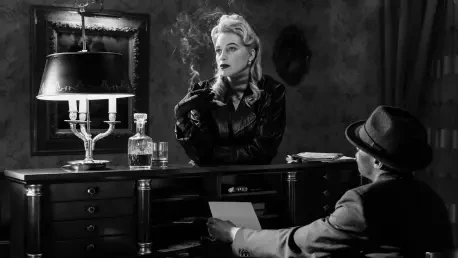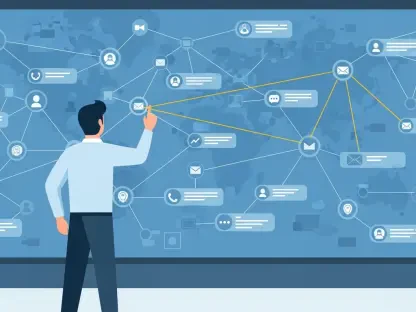In an era where technology continually reshapes the boundaries of creativity, the emergence of Tilly Norwood, an AI-generated “actress” crafted by U.K.-based startup Particle6 Productions, has ignited a firestorm of debate within Hollywood and beyond. This digital construct, built using cutting-edge tools like OpenAI’s Sora for video synthesis, isn’t a sentient being but a meticulously programmed entity trained on vast datasets of real actors’ performances. Marketed as a versatile storytelling tool capable of starring in customized videos, Norwood has captivated some with her potential while provoking outrage among others who see her as a threat to the very essence of human artistry. This controversy underscores a pivotal tension between technological innovation and the preservation of authentic creative expression, raising profound questions about ethics, labor, and the future of entertainment.
Ethical Dilemmas in Digital Performance
Consent and Intellectual Property Concerns
The rise of Tilly Norwood has thrust ethical issues into the spotlight, particularly around the use of human data in AI development. Critics, including Hollywood’s SAG-AFTRA union and notable actors like Melissa Barrera and Natasha Lyonne, have voiced alarm over the lack of explicit consent from performers whose work has been used to train such models. Many argue that this practice borders on exploitation, with some even calling it a form of intellectual property theft. The concern is not just about ownership but also about the potential erasure of an actor’s unique emotional depth, which cannot be replicated by algorithms. As debates intensify, there’s a growing fear that without strict safeguards, the very foundation of personal creative rights could be undermined by technologies that prioritize efficiency over ethics, leaving performers vulnerable in an increasingly digital landscape.
Balancing Innovation with Human Artistry
On the other hand, advocates of this technology, including Particle6 founder Eline van der Velden, position Norwood as a groundbreaking asset rather than a replacement for human talent. They liken her to CGI—a tool that enhances storytelling possibilities, especially for independent creators with limited resources. The argument is that AI can coexist with traditional acting, opening doors to experimental narratives that might otherwise remain unrealized due to budget constraints. However, even supporters acknowledge the need for transparency in how these digital entities are developed and deployed. The challenge lies in ensuring that innovation doesn’t come at the cost of devaluing the human experience, which remains at the heart of performance art. Striking this balance is proving to be a complex endeavor as the industry grapples with defining ethical boundaries for AI integration.
Industry Impact and Future Considerations
Job Displacement and Shifting Dynamics
A significant worry surrounding AI constructs like Tilly Norwood is their potential to disrupt the livelihoods of working actors. There’s a palpable concern among performers and unions that such technology could tilt the scales in favor of tech-savvy producers, sidelining human talent in favor of cost-effective digital alternatives. Reports of talent agencies expressing interest in representing Norwood signal a possible transformation in casting practices, one that might further marginalize traditional professionals. This shift raises questions about equity in an industry already fraught with disparities, as smaller-budget projects might increasingly rely on AI to bypass the expenses associated with hiring human actors. The ripple effects could reshape not just individual careers but the entire ecosystem of entertainment production.
Regulatory Needs and Public Perception
Beyond immediate job concerns, the integration of AI in media highlights a glaring gap in current regulatory frameworks. Industry stakeholders, including unions, are pushing for stricter guidelines, such as mandatory disclosures when AI is used in productions and revenue-sharing models for works derived from human data. There’s also unease about how the public perceives these digital entities, with warnings that anthropomorphizing AI risks blurring the lines between reality and simulation, potentially misleading audiences about the nature of machine intelligence. Addressing these issues requires a collaborative effort to establish norms that protect both creators and consumers. As discussions evolve, the focus remains on crafting policies that foster innovation while preserving the cultural integrity of storytelling, ensuring that technology serves as a partner rather than a disruptor.
Path Forward for Ethical Integration
Reflecting on the Tilly Norwood saga, it’s evident that Hollywood faces a defining moment in navigating the intersection of AI and human creativity. The controversy has brought to light deep-seated fears of exploitation and job loss, juxtaposed against the undeniable potential for technological advancement in storytelling. While critics highlight the erosion of authentic performance art, proponents point to a future where AI could democratize content creation if handled responsibly. The consensus that has emerged is a call for robust dialogue and regulation, ensuring that such innovations complement rather than replace human agency. This nuanced clash of perspectives underscores the importance of prioritizing both progress and humanity, setting a precedent for how the entertainment industry can adapt to future challenges with care and foresight.









